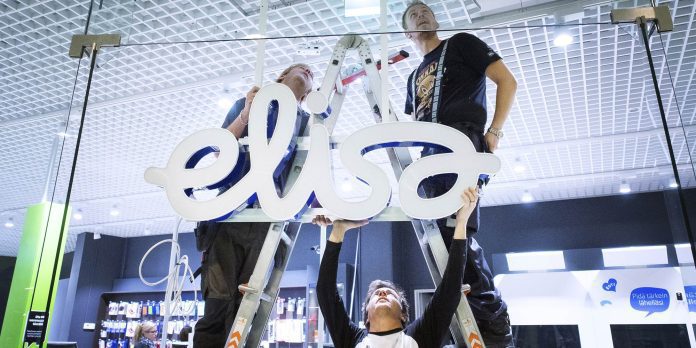Finnish telecoms company Elisa is supporting the digital upgrade of around 100 factories owned by US consumer goods company Procter & Gamble, following an initial rollout of IoT monitoring and insights at 10 sites.
The partnership, which has been openly discussed by Elisa on the conference circuit for some time, has shifted up a gear, it seems. “One of our largest customers is Procter & Gamble,” commented Kari Teho, general manager for Elisa’s smart factory division, speaking at IoT Solutions World Congress in Barcelona last week.
“[We are responsible for] the software in what Procter & Gamble calls the ‘end-to-end suite’, [which is] one of best industrial IoT solutions – which is currently in 10 factories, [but will] roll out to 100 factories.”
Procter & Gamble’s factory in Rakona, in the Czech Republic, was recently ranked by the World Economic Forum as one the smartest in the world, and one of just nine from a survey of over 1,000 to be credited by the organization ‘lighthouse’ factories for their digital transformation.
Elisa started its own digital transformation journey 11 years ago, it said, in pursuit of a system to connect and monitor sundry devices in its own network, and feedback data to its network operations centre (NOC) in order to get a handle on faults and blackouts.

By 2014, 35 per cent of network incidents were picked up ahead of time by the system’s predictive algorithm; the figure is now at 80 per cent, and its NOC is fully automated, without a technician in sight, said Teho in Barcelona.
“Seventy per cent of the absolute incidents have been coming down, based on using analytics, software, and robots,” he said, referring to the percentage of incidents being gradually eliminated, subject to its analytics processes.
“Now, in a traditional NOC, we have zero people. It is all automated. There is so much data that no human can handle it anymore.”
The company has been offering the same data-analytics and digital-twinning recipe to third parties, notably in manufacturing, for five years. Its solution is based on PTC’s Thingworx platform, drawing also on the Boston firm’s Kepware-branded industrial connectivity engine. It is available as a cloud-based solution, running on Amazon’s AWS or Microsoft’s Azure, or as a local / hybrid installation.
The pitch from Elisa, as from other industrial-change providers, is to afford enterprises a way to gain control of factory operations by connecting their machines, and reduce downtime and improve quality by shuffling historical and real-time data through an edge-to-cloud analytics engine.
The company is also serving Danish engineering firm Danfoss, and German electric car maker e.GO Mobile, among others, including most of the Finnish industrial sector. It has just announced a reseller deal with NVision in the Czech Republic to offer “actionable, real-time” insights to customers in industrial process businesses based on Elisa’s Smart Factory solution.
Teho commented: “Even a company like Procter & Gamble has standardised software – it’s using GE Proficy, SAP, all of that. But different countries have implemented in different ways. So you can’t just roll it out like that – you need to understand the country, how that factory is runnning it, what they want from it.
“But if we monitor more or less 150 KPIs in real time, and do that from the in-part to the out-part, for all line operations and all material flows, and all that stuff, it has changed dramatically how you operate the factories.”
He explained: “We basically sell three things: the speed of the connection, the quality of the service, and the SLA. That’s all we sell, and you pay a price for that – so that [the factory systems are] running 99.9999 per cent of the time, all the time.”
Elisa claims to the first commercial 5G network in its home country. 5G will change the industrial world, says Teho. “We are in a very interesting position at the moment. The world will change. One key enabler for that will be 5G,” he said, referencing also the architectural shift with 5G, as compute power is augmented at the network edge (MEC), making streaming analytics, already boosted by 5G speeds, at once turbo-charged and jet-heeled.
“5G will be a great technology. It’s not just that you have better speed on the networks; 5G base stations will be running analytics, themselves. The more base stations you have, to build up your non-licensed 5G networks in factories and campuses, [the more powerful] the streaming analytics you can run at the edge.”
Addressing a panel question about where to place compute power on the edge-cloud continuum, he responded: “It’s not black and white. We see a hybrid world. We have five million connected assets, which we monitor in real time, all the time. We know what is happening now, what will happen tomorrow, what will happen next week. To do that, you can’t have it all in the cloud. But you need the cloud as well to sort the data, and further analyse the data. You can’t do it all in the edge.”
Elisa is offering a private LTE solution to enterprise customers and public safety agencies with Swedish vendor Ericsson.
Ericsson said the offer will enable Elisa’s enterprise customers to “gain control” of users, devices and traffic on localised private cellular networks. It is understood the setup utilises spectrum Elisa has already licensed in Finland, rather than license-free shared spectrum, as per private deployments variously using sundry 3.5-4.2 GHz and 5GHz bands.

